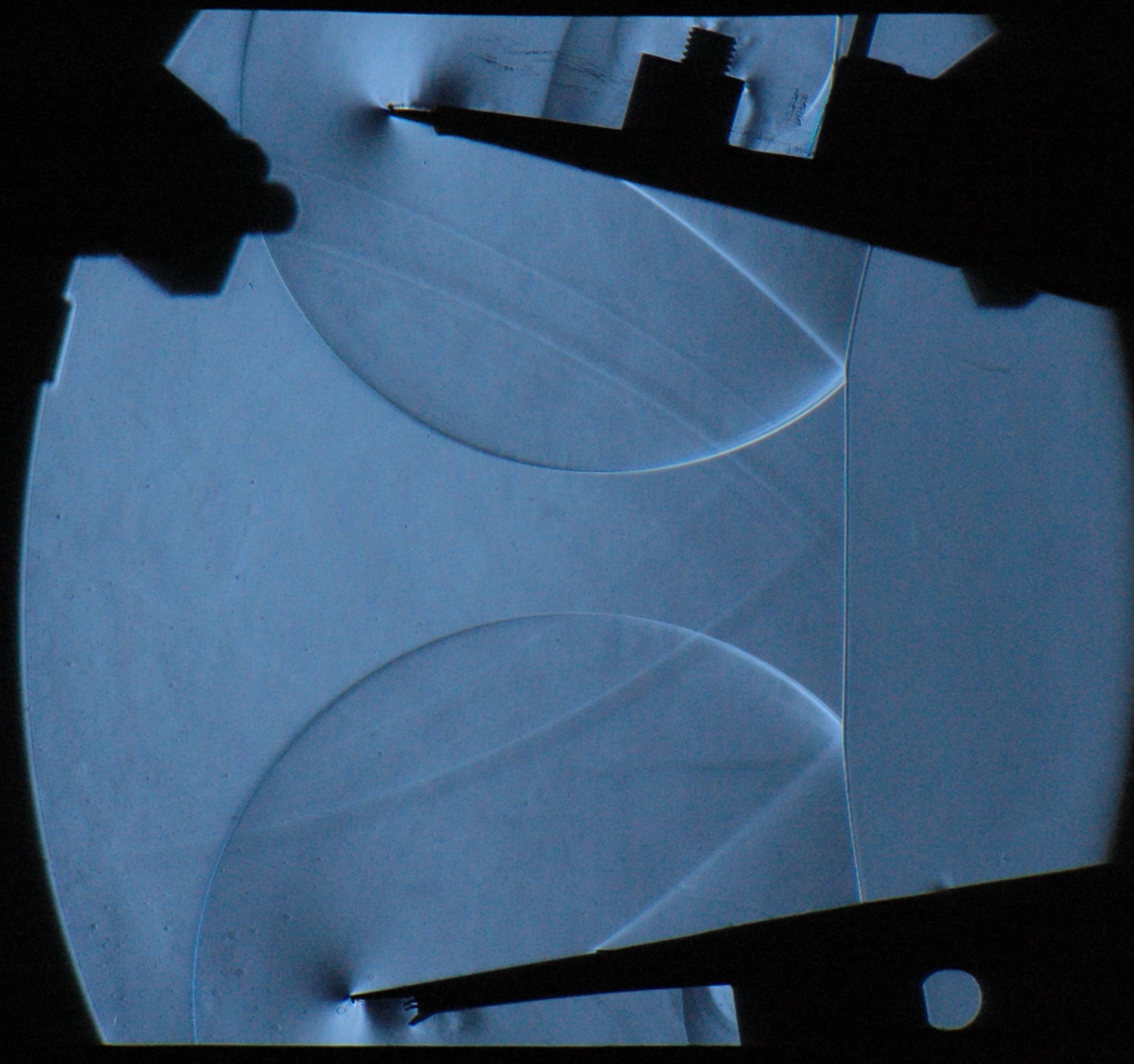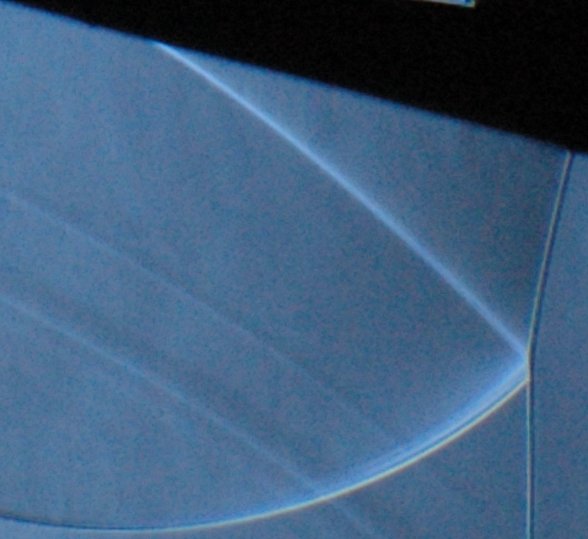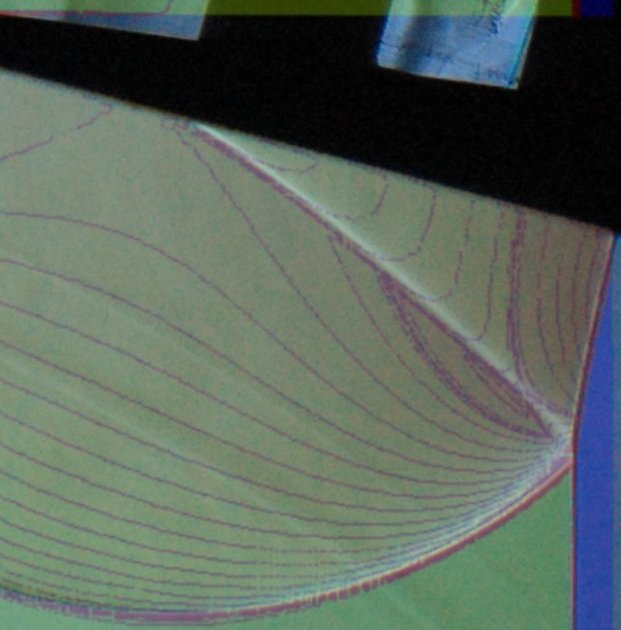Start of topic | Skip to actions
Back to Phase 0
The von Neumann Mach Reflection (vNR) resembles to the Simple Mach Reflection (SMR) but
can not be described by simple two- or three-shock theories.
In this case according to
Ben-Dor, the reflected shock is a smooth band of compression waves of finite thickness
near the 'triple point' and as the compression waves radiate from the triple point they
converge and steepen into a shock wave. 'The distance over which this happens is
too small to be resolved experimentally.'
Also, Ben-Dor says that "a comparison between the SMR and vNR reveals that, while in a
SMR there is a slope discontinuity between the incident shock wave and the Mach stem,
in a vNR the incident shock wave and the Mach stem appear to be a single wave with a smoothly
turing tangent near the triple point. Furthermore the slipstream has quite a sharp
appearance in SMR-photographs, where as it has a fuzzy appearance in vNR-photographs.
As a matter of fact, the slipstream of a vNR resembles a distributed shear layer
rahter than a shear discontinuity. Finally the so called 'triple point' of a vNR
is not a well defined single point as in the case of a MR."
Only recently (Skews and Ashworth JFM 2005) has the region of the tripple point
in a vNR been well captured in experiment. Here the authors argue that their
results are consistent with the predictions of Guderley (1947) for the structure
in the area of the triple point.
Our experiments do, I believe, a much better job of capturing this vNR with
the optics Paul D designed.
* The full Run 42 - two vNR can be seen:


- Closeup from Run 42. 14degree wedge:

- Simulation overlay on experiment. Density contours shown:
